How the iPhone 8 Plus Takes Better Photos Than the 7
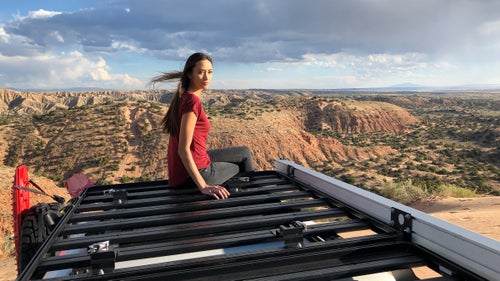
Here’s one nice thing about Apple launching the iPhone 8 and 8 Plus in September: late summer and early fall are, hands down, some of the best times to travel around New Mexico, where ���ϳԹ��� is headquartered, and test the new camera. The state’s already beautiful light gets even more saturated, temps start to cool so people want to play outside, green chile is roasting at farmers' markets, and events like the State Fair draw crowds to Albuquerque. This year, I took full advantage of the season to look at the iPhone 8 Plus’s most important camera updates. (Stay tuned for a review of the X later this year.)
First impression: there’s no doubt that the iPhone 8 Plus makes better pictures than the 7 Plus. Are the file's leaps and bounds better? No. Do they rival what you’ll get with a high-end mirrorless or a DSLR? No. But it’s obvious that Apple has made some improvements. The lenses stay the same on the 8 Plus—it's still equipped with a 28mm f1.8 and a 56mm f2.8—so it’s a bigger sensor and improved software that make the difference.
The sensor is still 12 megapixels, but it’s physically bigger than what’s inside the 7 Plus, and faster, so it can take in more information, and more information leads to better photos. Most of the photos in this gallery are unedited, unless I note otherwise. You can see that they’re sharp, accurate, and do a good job of not blowing out the highlights and providing good detail in the shadows.

The biggest software update is something called Portrait Lighting, a beta feature that enhances the camera’s portrait mode. With Portrait Lighting, you get a blurred background that mimics low depth of field. You can also enhance or change the light on your subject’s face after you take the picture. There are five modes to choose from: natural light (left), studio light (center), contour light (right), stage light, and stage light mono. I only chose to show natural, studio, and contour above because these are the easiest to use. (More on the other two other lighting modes below.)
Studio light identifies the subject’s face and adds fill light to eliminate some of the shadows. It’s sort of like photographing your subject with a soft box. Contour light, on the other hand, increases the contrast of a portrait by darkening the sides of your subject’s face and lightening the center, sort of like photographing your subject with a more directional light.
According to Apple, the company had an entire team of people travel the world studying portraiture in order to build the software for Portrait Lighting. The goal, Apple says, was to create lighting modes that looked as real and as timeless as possible on as many different face types as possible.
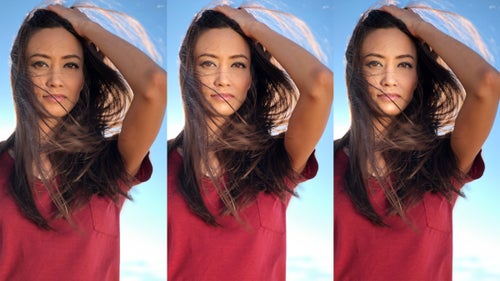
Here’s another example of natural, studio, and contour lighting. You can see that Apple worked hard to make sure Portrait Lighting didn’t come off as a gimmicky filter, which I applaud. The changes are subtle, but do augment a portrait in most cases. Stage lighting can be tricky, however, and nothing I shot worked as well as I would have liked (which is why it’s not shown).
With stage lighting, the phone identifies your subject, then removes the background, making the subject look like they’re sitting against a black backdrop lit by intense studio lights. (Stage light mono does the same thing but turns your subject black and white.) At this point, you have to be very careful. The software might have a hard time cleanly separating your subject from the background. I found that it was imperative to have a clean backdrop and nice light to help it along. My best results still looked Photoshopped, but I expect that the feature will only get better because Portrait Lighting is still in its beta phase.
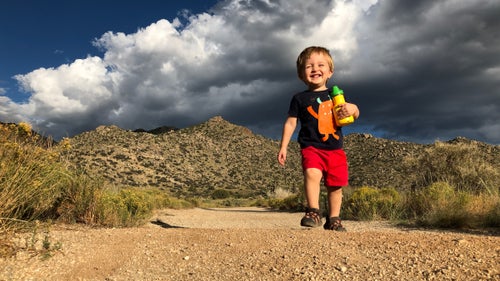
The new HDR is also a big improvement. I’ve long avoided HDR (high dynamic range), which combines multiple exposures into one picture as a way to better capture highlights and shadows. I didn’t like it, because the end result often looked fake and overly saturated. But on the iPhone 8 Plus, HDR automatically comes on when the phone thinks you need it, so I let it take over and was pleasantly surprised. In fact, the HDR was so good I almost couldn’t tell when the phone had turned it on. And that’s a big compliment because it means the new HDR just augments photos instead of changing them into something completely different.
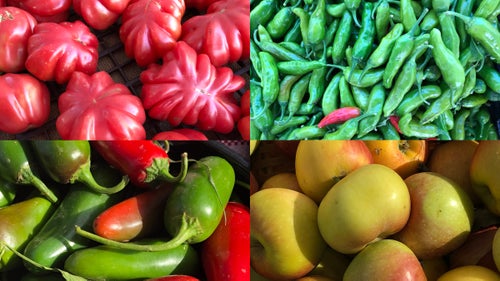
Apple is touting something called “deeper pixels” on the 8 Plus. What this means is that is that each pixel can store very precise light photons. One result: each color in the photo can be more specifically defined, or housed, without bleeding into the color next to it.
It’s hard to tell if the colors are that much more vibrant than the 7 Plus, because that camera already did a pretty good job. But as you can see from these images taken at the Albuquerque Farmers' Market, the phone had no problem gathering rich, deep, and accurate colors while photographing fresh produce.

To test the iPhone’s low-light capabilities, I went to the State Fair and used the portrait feature to photograph several different people. Like all the iPhones we’ve seen, the iPhone 8 Plus doesn’t stand up to more powerful mirrorless or DSLR cameras that have bigger sensors, can drink in more light, and therefore produce better low-light images. Straight out of the phone, my images were grainy and not tack-sharp.
However, when I changed the photo to black and white and reduced some of the noise in Lightroom, this image became totally passable for web use and light years ahead of the low-light images from early iPhones. That’s thanks to the bigger sensor and many of the software updates mentioned above.
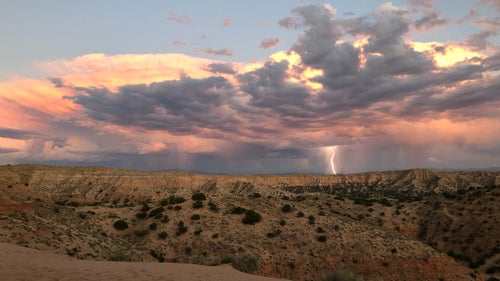
Last year we touted the iPhone 7 Plus as a great adventure camera because it fits in your pocket and takes a pretty good action shot. The iPhone 8 Plus makes adventure photography even easier because, in good light, the phone is buffering four frames at all times. This means that even if you’re not pressing the shutter, but just lining up the shot, the phone is still shooting photos so that there’s absolutely no shutter lag when you finally do press the button. You still have to be quick on the draw to capture something like lightning, but at least the shutter isn’t going to stand in your way.